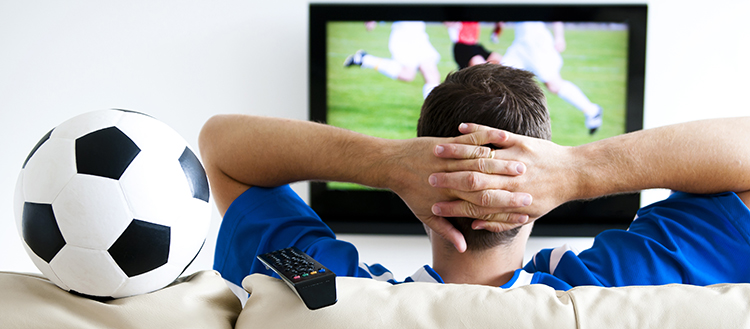Why the brain struggles to get off the sofa
Researchers at UNIGE have observed that the brain has a natural tendency to make as little effort as possible, and that it has to summon numerous resources to counter this affinity for the sedentary lifestyle.

© all rights reserved
About 30% of adults and 80% of teenagers today do not meet the minimum levels of daily physical activity for staying healthy, as recommended by the World Health Organisation (WHO). Previous studies have already demonstrated that there is a gap between the intention to play sport and actually playing it among individuals with a leaning towards a sedentary lifestyle. But what happens in the brain to prevent intention being followed by action? Researchers at the University of Geneva (UNIGE) and the University Hospitals of Geneva (HUG), Switzerland, have studied the neuronal activity of people faced with making the choice between physical activity and doing nothing. They noted that the brain requires far greater resources to escape a general attraction to minimising effort. A struggle then breaks out between the desire to do nothing and the physical activity. The results, published in the journal Neuropsychologia, are consistent with the idea that our ancestors had to avoid unnecessary physical effort to increase their chances of survival – which, of course, is no longer necessary in our modern societies.
Many people take out membership of a fitness club or gym but never set foot inside. This type of behaviour, which the researchers termed the “physical activity paradox”, has been demonstrated by earlier studies that contrasted the controlled system based on reason – I have to play sport to be healthy – with the automatic system based on affect – the discomfort and fatigue experienced during physical activity. When there is conflict between reason and affect, the physical activity behaviour is not implemented, and the individual tends to remain sedentary. But what happens at the neuronal level?
The research team headed by Boris Cheval (a researcher at NCCR LIVES at the Faculty of Medicine at UNIGE and HUG), and Matthieu Boisgontier (a researcher at Leuven University, Belgium, and University of British Columbia, Canada), studied the neuronal activity of 29 people, all of whom wanted to be active in their daily lives without necessarily being so. The participants had to choose between physical activity and inactivity while the researchers probed their brain activity using an electroencephalograph equipped with 64 electrodes.
Less time but more resources
“We made participants play the “manikin task” which involved steering a dummy towards images representing a physical activity, and subsequently moving it away from images portraying sedentary behaviour. They were then asked to perform the reverse action,” explains Boris Cheval. The researchers compared the differences in the time taken to approach the sedentary image and to avoid it. “We found that participants took 32 milliseconds less to move away from the sedentary image, which is considerable for a task like this,” continues Boris Cheval. It was an outcome that went against the theory and the physical activity paradox. So, how can it be explained?
The answer lies in the power of reasoning. The participants shunned the sedentary image faster than they approached it for two reasons: first, because this action was consistent with the instructions given by the researchers; and, more importantly, because it was in keeping with their intention to be physically active. Accordingly, they called on the resources needed to break free from their natural inclination, which drives them to minimise their efforts and react quickly to counter this “instinct”.
“On the other hand,” points out Boris Cheval, “we observed that the electrical activity associated with two brain zones in particular, the fronto-medial cortex and the fronto-central cortex, was much higher when the participant had to choose the sedentary option.” These two areas represent the struggle that takes place between reason and the affects, and the capacity to inhibit natural tendencies, respectively. “This means the brain has to use much more resources to move away from sedentary behaviour, rather than follow its natural penchant for minimising effort.”
Fighting the legacy of evolution
Where does this inclination for sedentary behaviour come from? “Making as little effort as possible was crucial for the human species during evolution”, says the researcher. “This orientation towards saving and conserving resources increased the chances of survival and reproduction.” Today, however, our modern society renders this energy optimisation obsolete. “On the contrary, physical activity should be encouraged instead of putting temptations in the way to do less, such as escalators or elevators. For instance, we could modify the way public spaces are designed to reduce the opportunities for individuals to engage spontaneously in behaviour associated with minimising effort.”
